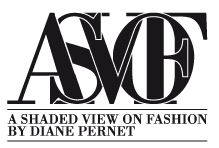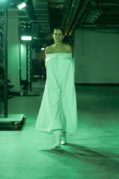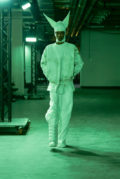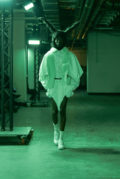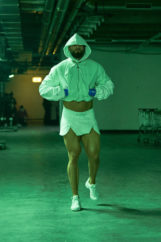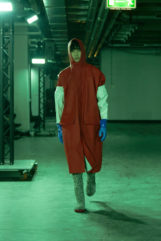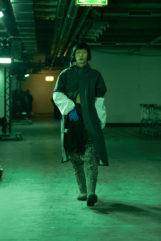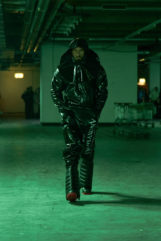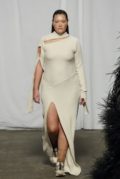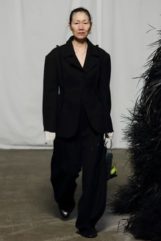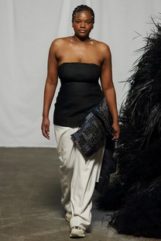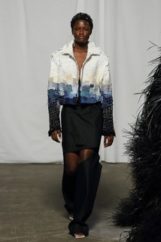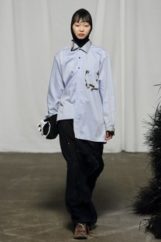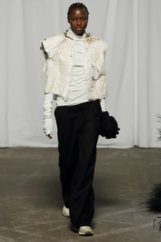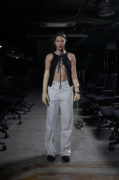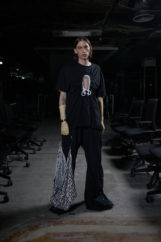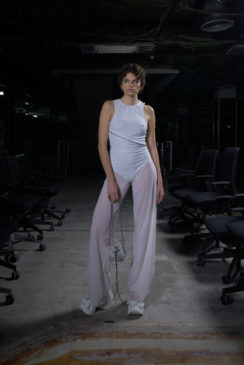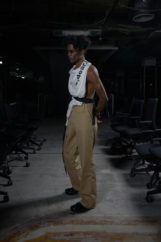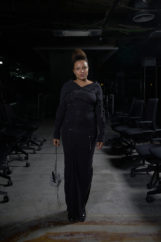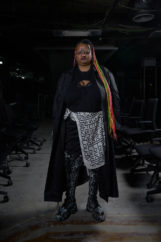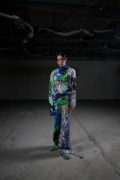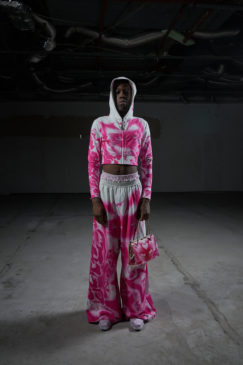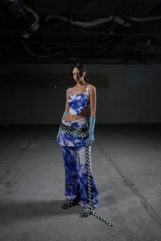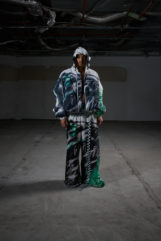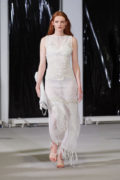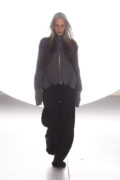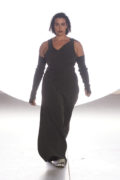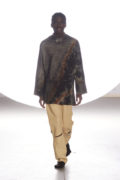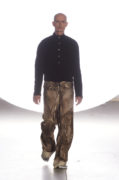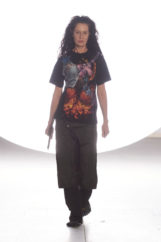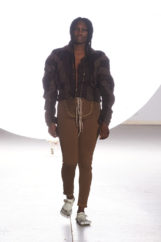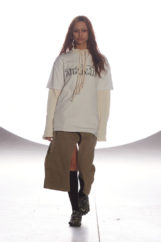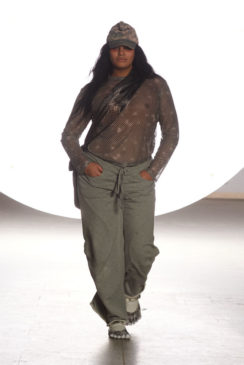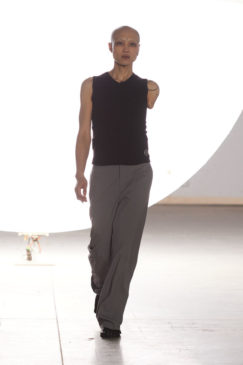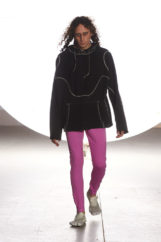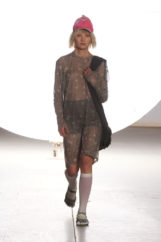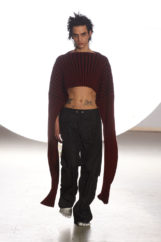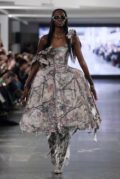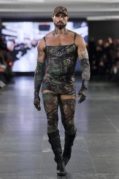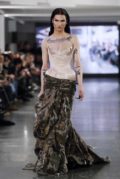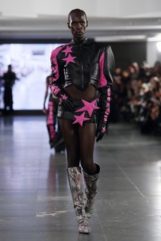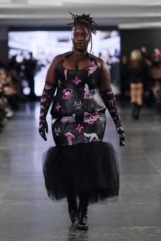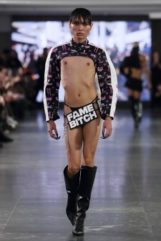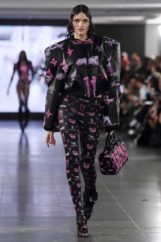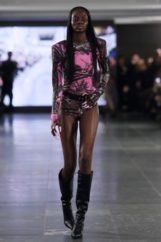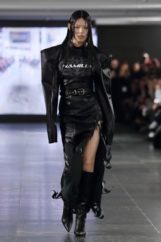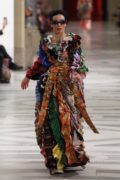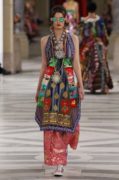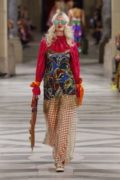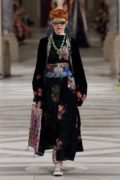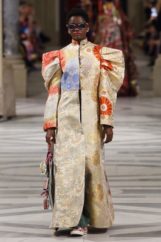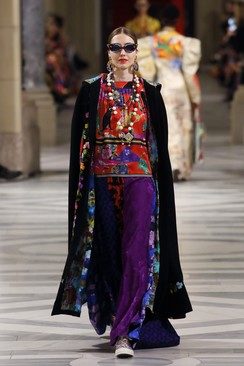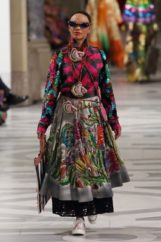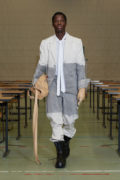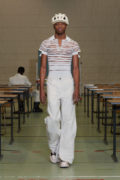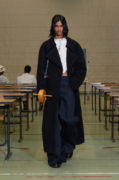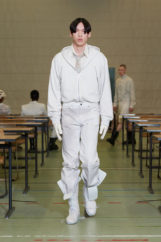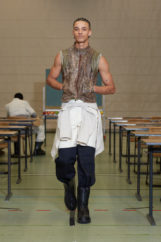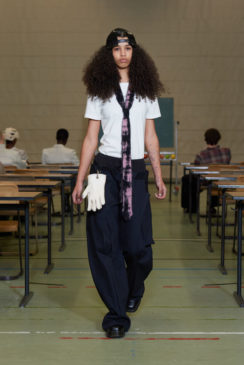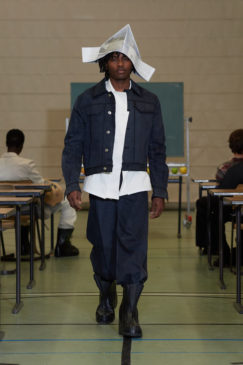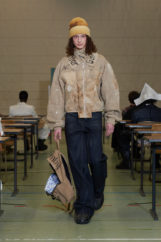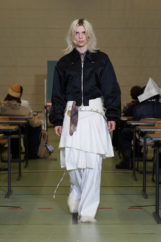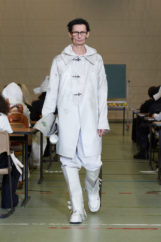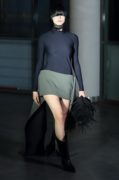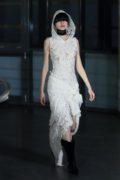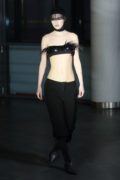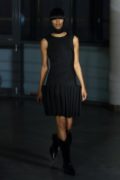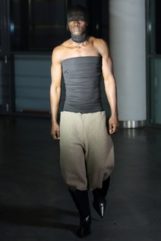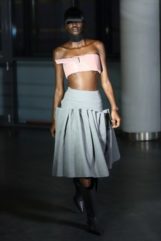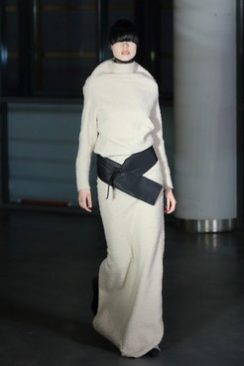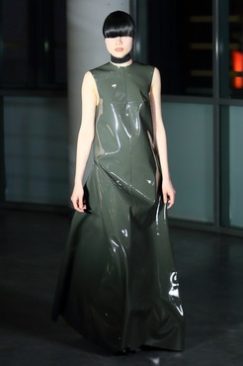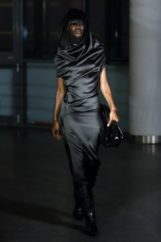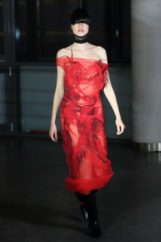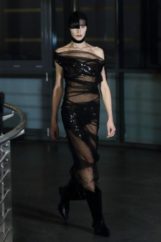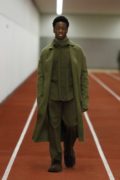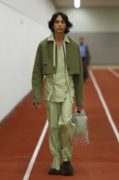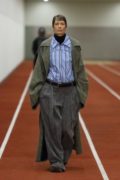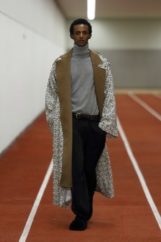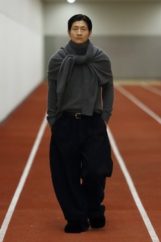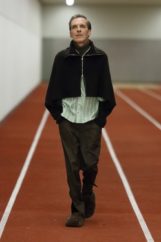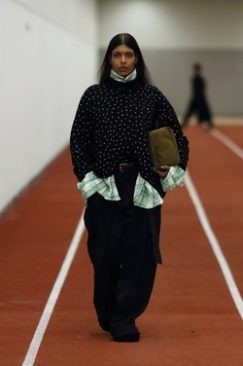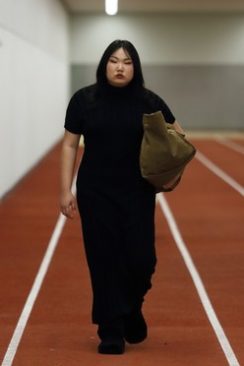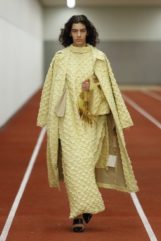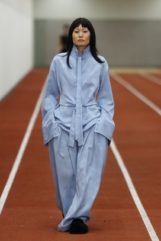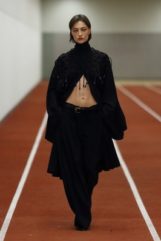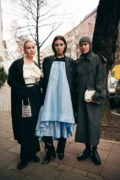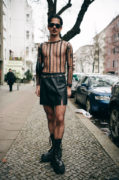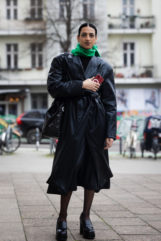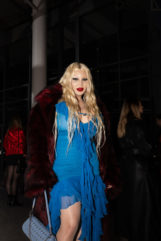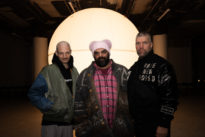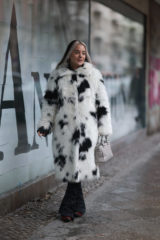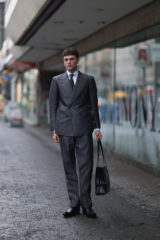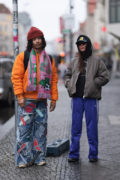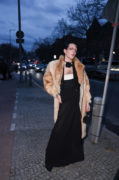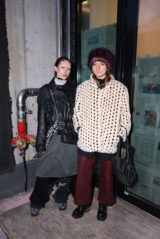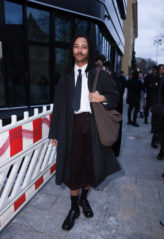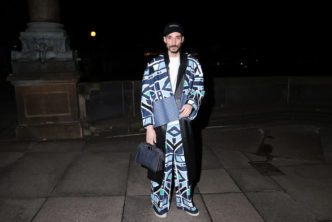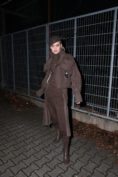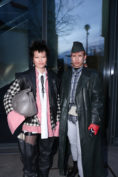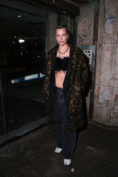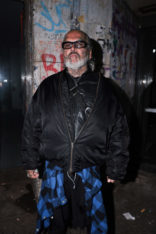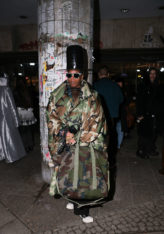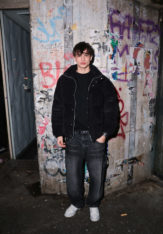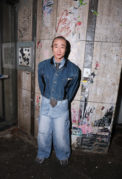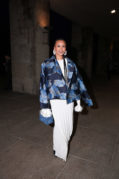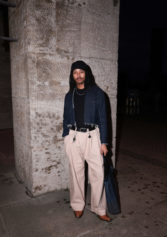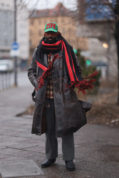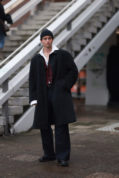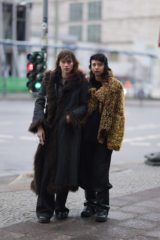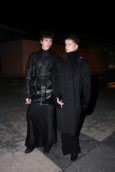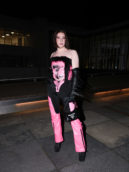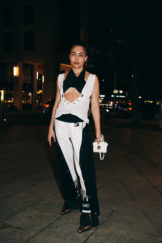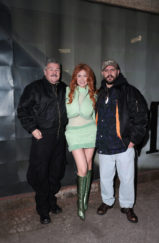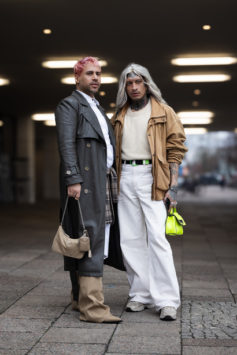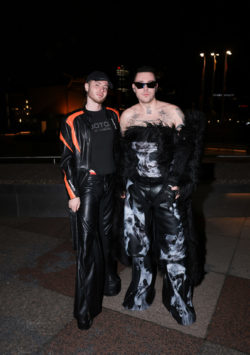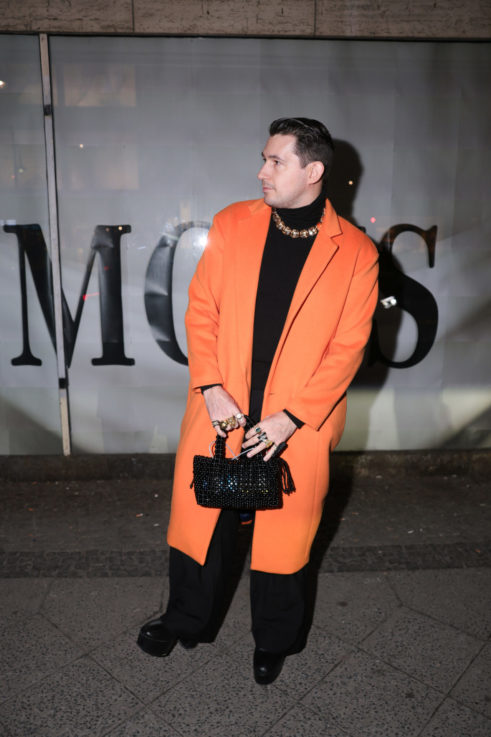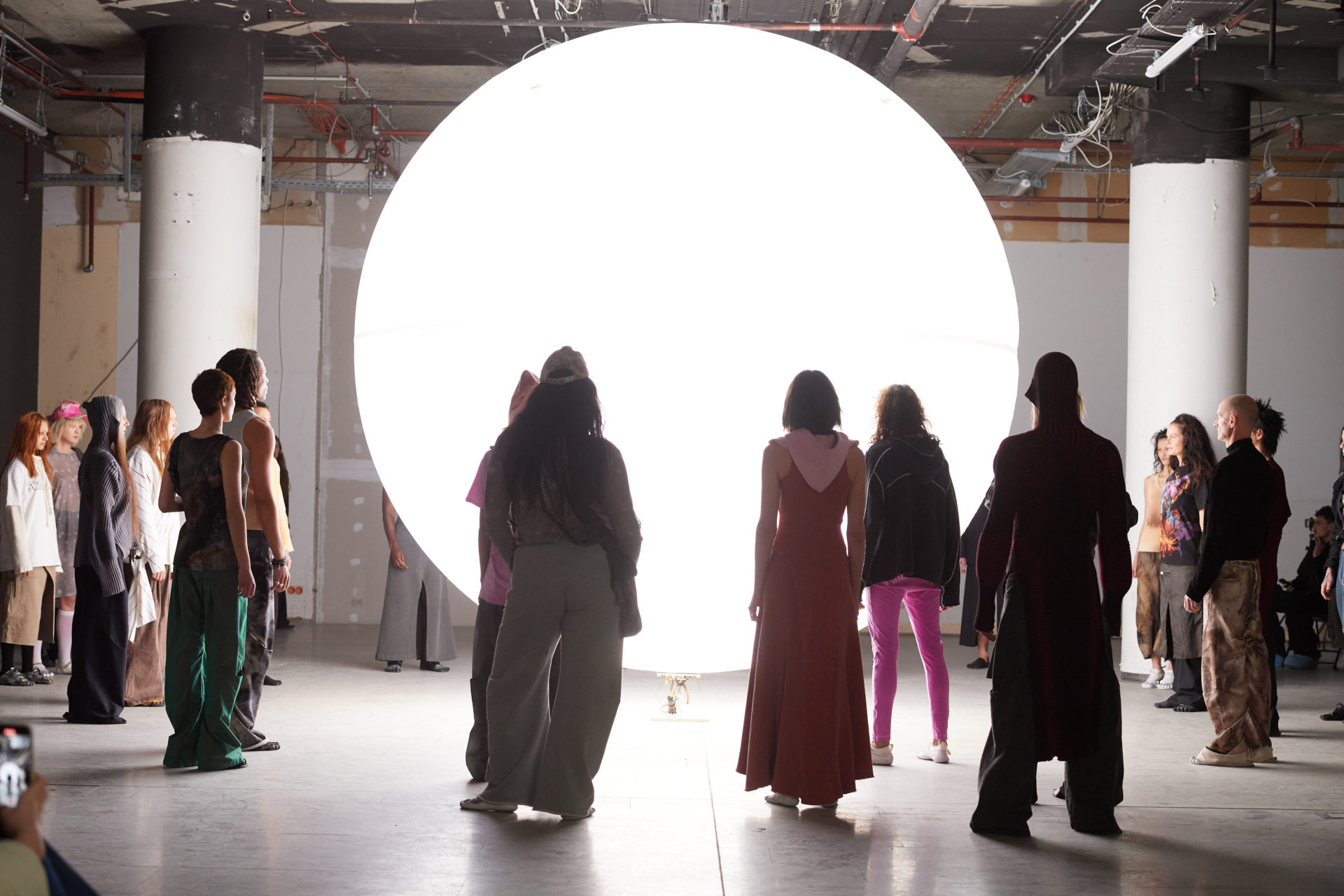
Typically, articles about Berlin Fashion Week, which recently took place from February 5th to 8th in the German capital, begin with emotionally charged discussions about the venue itself. The highlighted collections often take a back seat – analyses of individual front rows sometimes appear more captivating, often solely aimed at questioning the legitimacy of the entire event. In doing so, it is in many cases overlooked that the variety of collections can reflect the diversity of show guests – a spectrum that a progressive Fashion Week should embody.
While celebrities from reality TV formats can serve as ideal customers for labels with stage-ready outfits, it may be more important for other commercial brands to have buyers from fashion houses at the shows. The often-mentioned criticism of the lack of retail buyers becomes less significant, especially when, as was once again observed in Berlin, a considerable portion of the guests at the shows are dressed in the corresponding labels. Regardless of whether the garments were provided to them or they acquired them independently, they represent both the target audience and brand advocates. It’s important to recognize that, even during the renowned Fashion Weeks, like the established major ones, the attention isn’t solely on the runway shows. Instead, much emphasis is placed on the showrooms, where industry insiders avidly explore the latest collections.
According to the organizers, nearly 20,000 participants from Germany and abroad attended the 32 fashion shows and 42 accompanying events, all under the theme “The responsible movement of freedom, inclusion, and creativity.” The focus was on sustainability, diversity, and innovation, aspects that in Berlin reflect less flowery language from a press release, but authentically mirror the core competencies and societal development of the city.
Scott Lipinski, CEO of the Fashion Council Germany (FCG), noted, “Berlin Fashion Week has revealed a completely new, sincere, and unfiltered side. I am proud to have supported this transformation.” He personally moved to Berlin because he felt a sense of freedom there. He further emphasized, “There it is. Freedom and inclusivity. Lived and not just performed.”
This embodied spirit was clearly palpable, as was the signature of the FCG, which during this Fashion Week came positively to the fore in many aspects.
The core of the four days revolved around remarkable collections and presentations from formats and labels such as Intervention, Namilia, William Fan, and Rianna + Nina, which led the fashion audience throughout the city. From avant-garde venues exuding Berlin’s rugged charm in a former department store in Neukölln, to the iconic Bode Museum and Berlin’s landmark, the Olympic Stadium, each presentation not only showcased the diversity and creativity of the participating fashion brands but also encapsulated the essence of the city.
Intervention, a novel addition to the Berlin Fashion Week program, curated by Reference Studios and led by Mumi Haiati, celebrated the fusion of fashion and art. Remarkable highlights included shows by Anonymous Club and Gerrit Jacob – names that are already internationally recognized. Haiati is also no stranger; he has established a significant agency that not only collaborates with global fashion industry giants but also significantly enhances the reputation of his adopted hometown of Berlin.
Der Berliner Salon at the Kronprinzenpalais played a crucial role in promoting local talent and fostering German craftsmanship. Curated by two driving forces of the Berlin Fashion Week, Christiane Arp, Chairwoman of the FCG, and Marcus Kurz, CEO of Nowadays, this exhibition presented German design in various disciplines. Der Berliner Salon also showed the impressive works of the designer Karen Jessen in the spectacular rooms of the Feuerle Collection, a private collection of Désiré Feuerle, which usually exhibits international contemporary artistic positions with imperial Chinese furniture and antique art from Southeast Asia on over 6,000 square metres.
Furthermore, events such as the Fireside Dinner, hosted by the FCG, and Frankfurter Allgemeine Zeitung’s Fashion Reception are of special significance, as they bring together key figures from the fashion, economic, and art sectors. They reaffirm the indispensability of physical gatherings for exchange and revitalization of the market, especially after numerous worldwide digital formats have failed and international platforms demand this direct interaction. The importance of these events for the German fashion world is underscored by Frankfurter Allgemeine Zeitung’s Alfons Kaiser: “With our fashion reception, we want to commit ourselves to Berlin. Many in Germany do not recognize that we need a fashion city in a country. And only in Berlin is there a real scene with hundreds of fashion makers that we are happy to support. This is how we also want to live up to our claim to be a ‘newspaper for Germany’.” This illustrates the relevance of Berlin Fashion Week not only for the city itself but also for the entire German fashion world.
These are the highlights of Berlin Fashion Week:
Find more about ANONYMOUS CLUB here.
AVENIR, the Berlin-based label, led by designer Sophie Claussen, debuted its AW24 collection during Berlin Fashion Week. Named “SWEAT,” this collection confronts the challenges of global warming head-on. Sophie Claussen explores the impacts of climate change through sustainable fashion, a core value deeply ingrained in Avenir’s ethos since its establishment in 2020. The collection, characterized by fabric manipulations, sophisticated layering, and a color palette reflecting temperature fluctuations, serves as a poignant reminder of Earth’s distress. Claussen skillfully weaves together textures and tones, using exclusively up- and recycled materials to create dynamic silhouettes that mirror our changing climate. Avenir’s runway show at the Kühlhaus showcased Claussen’s collaboration with Studio Lilo, featuring a flower-adorned set design that complemented the collection’s message of environmental urgency.
Find more about AVENIR here.
BACK2BACK, the label founded by Yolanda Zobel and Marcelo Alcaide, unveils its latest collection as part of the new showcase format, Intervention. The name “back2back” symbolizes the collaboration between the founders, who crossed paths during their tenure at Courrèges. Their joint pursuit of continuous experimentation stands as a testament to freedom and liberation. The collection showcases unconventional shapes, unfettered by conventional norms. Urban and workwear-inspired aesthetics dominate the current collection, predominantly in black and white. Back2back boldly deconstructs traditional menswear elements, rearranging them in a haphazard yet deliberate manner. This utilitarian approach imbues the garments with a distinct character, offering a fresh interpretation of classic menswear staples such as trench coats, bomber jackets, overalls, suits, trousers, and sweaters.
Find more about back2back here.
GERRIT JACOB, not only the inaugural designer in the new Intervention showcase format but also the opening act for the Berlin Fashion Week, presents his collection with a flourish. The brainchild of the Berlin and Milan-based communication agency Reference Studios, directed by Mumi Haiati, Intervention aims to seamlessly integrate national and international designers into BFW’s official calendar, heralding a new era of collaborative creativity. Jacob’s presentation predominantly features streetwear-inspired ensembles, characterized by vibrant neon-colored airbrushed cat-techno prints. At the core of his fashion philosophy lies the seamless fusion of traditional craftsmanship with innovative techniques. Themes of identity and self-expression reverberate throughout his designs, inviting wearers to embark on a journey of self-discovery, celebrate their uniqueness, and forge meaningful connections with the world. With his Intervention debut, Gerrit Jacob has opened a new chapter in the fashion narrative. His unwavering commitment to innovation and creativity serves as a beacon for future generations of designers, inspiring them to challenge conventions and redefine the boundaries of sartorial expression.
Find more about GERRIT JACOB here.
LOU DE BÈTOLY unveils the latest collection within the atmospheric setting of the former Habitat furniture store at Potsdamer Platz. Against a backdrop of black foil, the French designer Odely Teboul showcases her ethereal lingerie-inspired creations. Central to the new collection are themes of illusion and distortion, with many ensembles challenging perceptions of reality. Skirts crafted from bras and leather coats repurposed into bags offer innovative reinterpretations of classic couture, embodying the label’s commitment to upcycling. One standout piece creates the illusion of denim but is, in fact, intricately crocheted from yarn and sequins. The collection seamlessly blends vintage materials such as leather and mohair with modern elements like nylon textiles sourced from deadstock and wool spun from recycled dog hair waste. Lou de Bètoly’s signature handcrafting techniques elevate these reclaimed materials into luxurious garments with a distinctive aesthetic. Fabrics are manipulated to distort texture and shape, resulting in a diverse array of silhouettes, ranging from delicate, form-fitting lace dresses to voluminous, fluffy gowns and distorted coats.
Find more about LOU DE BÈTOLY here.
LUEDER presents her latest collection, “Mono-Myth,” at the former n24 film studio in Potsdamer Platz. Models adorned androgynous ensembles crafted from denim, jersey, and eco-nylon, orbiting around a towering four-meter-tall light sphere symbolizing an eternal sun. Inspired by medieval craftsmanship, Lueder intricately blends elements of pattern cutting and fabric manipulation, injecting a genderless twist into menswear classics. As the designer embarks on this transformative journey, “Mono-Myth” emerges as a testament to resilience, offering a captivating narrative of hope and empowerment in a world yearning for positivity and change.
Find more about LUEDER here.
NAMILIA‘s AW24 collection, “Pfoten weg!”, is eagerly anticipated by the label’s vibrant fan base on Tuesday evening at the Kulturforum Gemäldegalerie. Drawing inspiration from medieval armor, military aesthetics, and glamorous trash, Emilia Pfohl and Nan Li present looks that provocatively address the hate directed towards queer individuals who courageously navigate public spaces. Materials and aesthetics play a pivotal role this season, with an array of prints and patterns, including realtree motifs and bespoke monogram prints. Pinks and rhinestones interplay with chain mesh, stretch lycra, and vegan leather, crafting a dynamic visual narrative. Moreover, the collection introduces new silhouettes, featuring sculptural fits and couture-inspired designs that redefine the brand’s aesthetic. The show’s ambiance is meticulously curated, with the illustrious Kulturforum in the Gemäldegalerie serving as the backdrop. Renowned London-based DJ and producer, SH3L, provided an original soundtrack, enhancing the sensory experience. The casting reflected Namilia’s well-known commitment to diversity, presenting a refreshing and alternative vision of fashion. This season’s highlight for Namilia lies in collaboration, as they reunite with creatives who inspire their vision of freedom. Ultimately, the brand aims to imbue wearers with confidence, power, and undeniable allure, epitomizing the essence of liberation through fashion. “Paws Off!” encourages individuals to embrace their truth unapologetically, reclaiming agency over their bodies and identities.
Find more about NAMILIA here.
RIANNA + NINA‘s “OPERA” collection takes center stage at the illustrious Bode Museum before the collection is showcased at RIANNA + NINA‘s Parisian Flagship Store at Palais Royal. Drawing inspiration from the legendary Maria Callas, the duo transforms vintage fabrics into mesmerizing, one-of-a-kind pieces, paying homage to the iconic soprano’s stage presence. The defilée masterfully captures the essence of the collection, accompanied by the timeless melodies of Maria Callas herself. A-line silhouettes reminiscent of the 60s and 70s dominate, adorned with intricate golden details, shimmering accents, and hand-painted fabrics sourced primarily from Japan and Mexico. Glittering elements elevate evening ensembles with sophistication, while playful accessories such as rhinestone-studded swim goggles add a whimsical touch. Collaborating with Converse, Rianna’s hand-painted shoes exemplify the brand’s distinct creativity. Embracing diversity, the collection features models from diverse backgrounds, embodying Maria Callas’s timeless allure irrespective of age or origin.
Find more about RIANNA + NINA here.
SF1OG showcases its captivating AW24 collection at Berlin Fashion Week, unveiling it at a conceptually exciting location: a nostalgic school gym hall. The show’s concept, supported by the Senate Department for Economic Affairs, drew inspiration from school life in former East Germany. Each garment displayed incredible attention to detail, introducing a new playfulness with pleated skirts and unevenly striped shirts. Materials like repurposed linen and leather added texture and depth. The presentation at the Ernst-Reuter-School highlighted SF1OG’s dedication to authenticity and storytelling, challenging industry norms. Rock sounds and exclusive backpacks made in collaboration with Eastpak further enhanced the collection’s artisanal appeal, blending rebellious attitude with historic design elements.
Find more about SF1OG here.
SIA ARNIKA‘s collection centers around a mysterious woman exuding fierce determination and unwavering willpower, drawing inspiration from the enigmatic Asta Nielsen, a silent film star born in Denmark in 1881. Embracing themes of transformation, the collection explores contrasts like disarray and ornamentation, reflecting the diverse roles portrayed by Nielsen. Each garment is meticulously crafted with attention to texture, shape, and deconstruction, forming the foundation of the narrative. The runway presentation strips away distractions, allowing models to gracefully navigate a dramatic structure, while curated light and sound transport the audience into the meticulously crafted realm of the collection.
Find more about SIA ARNIKA here.
WILLIAM FAN, a Berlin-based label established in 2015, seamlessly blends European and Chinese influences, embodying a timeless and progressive ethos. The AW24 show, held at the Olympic Stadium’s warming hall, perfectly complements the collection’s main theme, OFF DUTY, which celebrates leisure and liberation from everyday norms. Fabrics are suitcase-friendly, with structured cotton taking center stage in versatile silhouettes. Washed, desert-inspired hues evoke a leisurely aesthetic, complemented by the introduction of a new sunglasses collection. The styling emphasizes personality while preserving anonymity, reflecting the diverse casting directly from Berlin streets. Fan’s collections continuously evolve core silhouettes, offering a refreshing take on modern dressing.
Find more about WILLIAM FAN here.
Looking back, Berlin Fashion Week has overcome its challenges and criticisms over the years, emerging strengthened from them, driven by the joint efforts of industry stakeholders. As designer Vladimir Karaleev aptly remarked, “Berlin Fashion Week has sparked my interest in presenting in Berlin next summer again.” While some labels, like his own, once praised in Berlin have shifted their focus to fashion markets outside Germany, it is hoped that Berlin Fashion Week can win back its wayward offspring – those who have gone abroad to mature and gain recognition, from which the location Berlin can now benefit. Indeed, the revival of German labels returning to Berlin could underscore the city’s growing allure and potential unique selling point in the global fashion world.
In recent years, young international brands have sought attention in Berlin after being overlooked in other already saturated fashion show calendars. However, there is a noticeable trend of German designers returning from abroad, many of them shortly after completing their studies and who never worked in Germany before. Marie Lueder is one of them and currently presented in Berlin. The designer appreciates the financial support for young talent in Berlin, an experience she did not have in London. This support, encompassing the entire Fashion Week, is provided by the Berlin Senate Department for Economics, Energy, and Public Enterprises and demonstrates the appreciation of the importance of the fashion industry as an economic engine.
Berlin’s free spirit increasingly permeates the content of the event days, such as the promotion of empowerment for marginalized groups and advocacy for diversity. An outstanding example is the NAMILIA collection, which actively advocates for the acceptance and support of different body shapes and vehemently opposes misogyny and all forms of discrimination, thus setting a new course for the fashion world. Therefore, it is not surprising that the internationally launched campaign “Mental Health in Fashion” was initiated in Berlin to raise awareness of mental health issues and counter their stigmatization.
The upcoming Berlin Fashion Week, scheduled for July 1st to 4th, 2024, promises optimism within the Berlin fashion scene and beyond, following the success of the last two editions. Many view the concurrent happening of the SEEK Fashion Trade Show with the summer installment of Berlin Fashion Week as a positive stride forward. “This synergy between the two events could create a win-win situation for the location, providing a platform for inspiring presentations while also fostering valuable networking opportunities and strategic partnerships”, as SEEK Show Director Maren Wiebus stated.
The fashion industry in Berlin is showing encouraging signs of collaboration and shared commitment to achieve new successes. This development could benefit many different stakeholders dependent on a flourishing fashion industry.
Streetstyle images of Berlin Fashion Week:
Later,
Florian Müller
